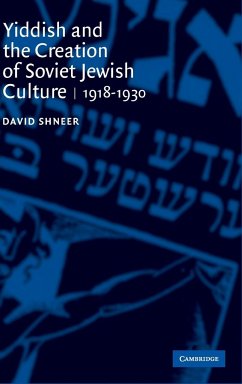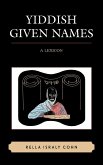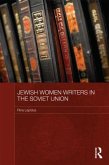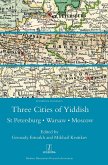Short description/annotation
Explores the state-supported creation of a secular Soviet Jewish identity by Jewish activists before WWII.
Main description
Yiddish and the Creation of Soviet Jewish Culture gives voice to the Soviet Jewish activists empowered by the state to create a Soviet Jewish national culture. Jewish activists were interested in building a Soviet Jewish culture because they were striving for a national revolution - the creation of a new culture through which Jews would identify as Jews on new, secular, Soviet terms. This book explores the ways in which Jews were part of, not apart from, the Soviet system and Jewish history. Soviet Jewish culture worked within contemporary Jewish national and cultural 1920s trends and simultaneously participated in the larger project of propagating the Soviet state and ideology. Soviet Jewish activists were not nationalists or Soviets, but both at once. David Shneer addresses some of the painful truths about the Jews' own implication and imbrication in the system and places his analysis in the context of wider twentieth-century culture.
Table of contents:
Introduction; 1. Soviet nationalities policies and the making of the Soviet Yiddish Intelligentsia; 2. How Yiddish became the national language of Soviet Jewry; 3. Making Yiddish modern: Yiddish language reform in the Soviet Union; 4. Who owns the means of production(?)33;: Soviet Yiddish publishing in the 1920s; 5. Soviet Jewish literature and Yiddish writers groups; 6. Becoming revolution: Izi Kharik, Soviet Yiddish poetry, and creative destruction; Appendix; Bibliography.
Explores the state-supported creation of a secular Soviet Jewish identity by Jewish activists before WWII.
Main description
Yiddish and the Creation of Soviet Jewish Culture gives voice to the Soviet Jewish activists empowered by the state to create a Soviet Jewish national culture. Jewish activists were interested in building a Soviet Jewish culture because they were striving for a national revolution - the creation of a new culture through which Jews would identify as Jews on new, secular, Soviet terms. This book explores the ways in which Jews were part of, not apart from, the Soviet system and Jewish history. Soviet Jewish culture worked within contemporary Jewish national and cultural 1920s trends and simultaneously participated in the larger project of propagating the Soviet state and ideology. Soviet Jewish activists were not nationalists or Soviets, but both at once. David Shneer addresses some of the painful truths about the Jews' own implication and imbrication in the system and places his analysis in the context of wider twentieth-century culture.
Table of contents:
Introduction; 1. Soviet nationalities policies and the making of the Soviet Yiddish Intelligentsia; 2. How Yiddish became the national language of Soviet Jewry; 3. Making Yiddish modern: Yiddish language reform in the Soviet Union; 4. Who owns the means of production(?)33;: Soviet Yiddish publishing in the 1920s; 5. Soviet Jewish literature and Yiddish writers groups; 6. Becoming revolution: Izi Kharik, Soviet Yiddish poetry, and creative destruction; Appendix; Bibliography.








